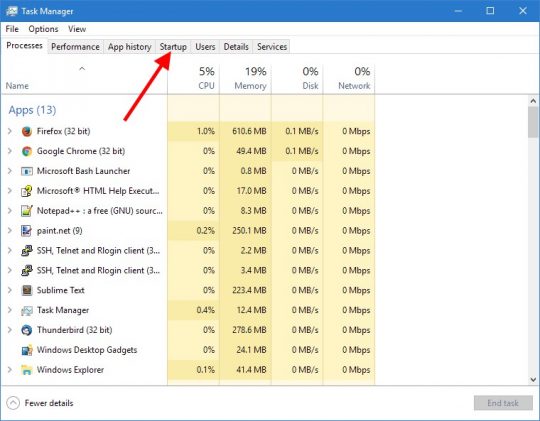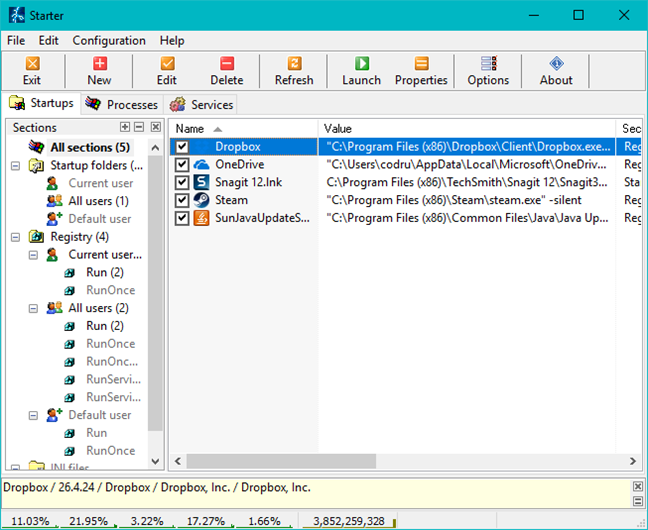

- #Windows startup manager microsoft how to#
- #Windows startup manager microsoft code#
- #Windows startup manager microsoft plus#
- #Windows startup manager microsoft windows 8#
- #Windows startup manager microsoft windows#
#Windows startup manager microsoft windows#
On most Windows computers, you can access the Task Manager by pressing Ctrl+Shift+Esc, then clicking the Startup tab.
#Windows startup manager microsoft windows 8#
In Windows 8 and 10, the Task Manager has a Startup tab to manage which applications run on startup. Many programs don't have a startup setting because most operating systems can automatically manage which programs run on startup. Each program is different, but it's usually in a settings or configuration menu. Some programs have a built-in setting to enable or disable them from running on startup. You can do an Internet search for the name of a program if you aren't sure what it is or what it does. If you use the program every day or if it's necessary for the operation of your computer, you should leave it enabled on startup. You don't need to disable most applications, but disabling the ones you don't always need or ones that are demanding on your computer's resources can make a big difference. Among other ways to keep your computer running smoothly, you can disable applications from running on startup to improve its performance.īefore you disable an application from starting, consider whether you should. While this is necessary for your computer to function, too many applications running on startup can slow down your computer. On the contrary, if you're using older versions of Windows, use the Bootcfg and NvrBoot tools instead.You may not realize it, but your computer runs several applications as soon as it starts. Only if you are in the Administrators group, you can edit the boot options in Windows Vista and more advanced Windows versions utilizing BCDEdit.exe tool included in those versions of Windows. That is because it enables users who are in Administrator group to lock the BCD store partition and gives some rights to other users to decide which ones can manage boot options. The Boot Configuration Data store is safer than the boot options in previous. The common boot error in Windows is the BOOTMGR is missing error. Step 5: If you want to disable BOOTMGR, cancel Time to display list of operating systems box or set the time value as 0 and click OK to finish the operation. After that, click OK to save the changes. Step 4: In the pop-up window, select the Time to display list of operating systems box and set the time value.

Then click on the Settings under the Startup and Recovery option. Step 3: When the System Properties window pops up, choose the Advanced option. Step 2: Type sysdm.cpl and click OK to continue.
#Windows startup manager microsoft plus#
Step 1: Open the Run dialog window by pressing Win plus R keys. Method 2: Change System PropertiesĪlternatively, you can change System Properties to enable or disable Windows Boot Manager. Step 3: If you want to disable Windows Boot Manager, you need to type bcdedit / set displaybootmenu no command to disable BOOTMGR, but by doing so you cannot use the Method 2. However, as it can unnecessarily slow down the boot process when it waits to ask you which operating system to boot to, you may want to disable it. Additionally, if you have multiple operating systems, you can choose the target operating system and enable Windows Manager when booting your computer.
#Windows startup manager microsoft how to#
How to Enable/Disable Windows 10 Boot Managerīased on the above description, you can know that Windows boot manager Windows 10 is beneficial to your computer. If that didnt work, follow the same steps but instead of updating, right-click and select uninstall. The boot manager will execute winload.exe, which is the system loader that is used to continue the Windows boot process. Right-click the Windows start > select Device Manager > Find the Display Adapter and expand it > Right-click and select update. If there’s no the “System Reserved” partition, probably the BOOTMGR is located on the primary hard drive (in most cases it’s C drive). In most Windows PCs, this partition is labelled as “ System Reserved” without hard drive letter. It is marked as “Active” in Disk Management. Microsoft Windows has a feature that allows you to select programs to start automatically whenever your computer powers on and to be available in the. Enter msconfig into the Run window and then choose OK to open. The BOOTMGR file itself is both read-only and hidden, which is located in the root directory of the partition. Press the Windows key + R on the keyboard to open a Run window. The database replaces the boot.ini file used in old Windows versions like Windows XP. The configuration data that BOOTMGR requires can be found in the Boot Configuration Data (BCD) store, which is a registry-like database. Besides, MiniTool will offer more information to you. It enables you to boot Windows 10/8/7 or Windows Vista operating system.
#Windows startup manager microsoft code#
Windows Boot Manager (BOOTMGR), a small piece of software, is loaded from the volume boot code that is a part of the volume boot record.



 0 kommentar(er)
0 kommentar(er)
